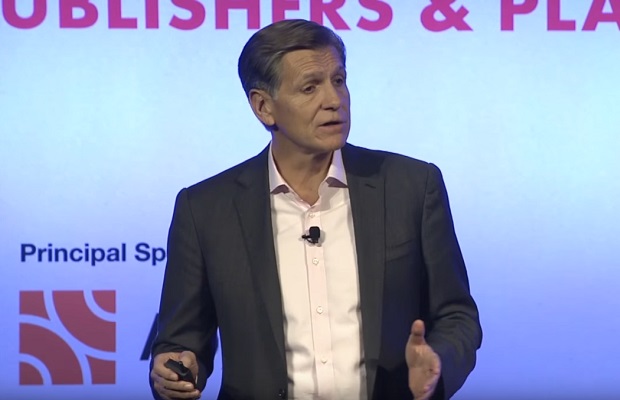FMCG giant Procter & Gamble is undertaking a new review of all of its agency contracts in 2017 in a bid to bring transparency to the “murky at best, fraudulent at worst” media supply chain.
Speaking at IAB’s Annual Leadership Meeting in Florida this week, Marc Pritchard, chief brand officer at P&G, revealed a four-point plan the business has put in place to exert greater control over the quality of its media strategy and ultimately create better advertising to drive growth.
Some key points from Pritchard’s speech:
• Procter will no longer support digital media forms that don’t adopt the basic viewability standards laid down by the US Media Research Council.
• P&G will insist that agencies deliver their results based on industry standards to earn their pay
• P&G will actively avoid agencies that use a string on “non-tranparent” middle-men involved in digital buy
• The company will also avoid platforms whose data lives inside walled gardens. Google and Facebook (the two main culprits) are already moving towards more open systems in response following this type of criticism.
• Every media agency’s contract will be examined to ensure that the linked principles of total transparency, and fair payment are clear.
Prichard said: “P&G believed the myth that we could be the latest mover on all the new shiny objects despite the lack of standards in measurement and verification.”
“We accepted multiple viewability metrics, publishers reporting with no verification, outdated agency contracts and fraud threats with the somewhat delusional thought that digital is different and that we were getting ahead of the digital curve. We’ve come to our senses and realised there is no sustainable advantage in a complicated, non-transparent, inefficient and fraudulent media supply chain.”
The programme includes a thorough review of all media-agency contracts after the company found a surprise in its dealings with at least one agency, plus requirements that everyone use industry-standard viewability metrics, fraud protection and third-party verification.
“We have an antiquated media buying and selling system that was clearly not built for this technology revolution,” Prichard continued. “We serve ads to consumers through a non-transparent media supply chain with spotty compliance to common standards unreliable measurement hidden rebates and new inventions like bot and methbot fraud.”
This in turn is leading to a “pretty anemic” growth rate among advertisers, despite spending $200bn on advertising in the US alone.
As a result, Pritchard called on the industry to produce better advertising to drive growth, enabled by media transparency to drive a “clean and productive” media chain.
He explains: “Better advertising and media transparency are closely related. Why? Because better advertising requires time and money, yet we’re all wasting way too much time and money on a media supply chain with poor standards adoption, too many players grading their own homework, too many hidden touches, and too many holes to allow criminals to rip us off.
“We have a media supply chain that is murky at best and fraudulent at worst. We need to clean it up, and invest the time and money we save into better advertising to drive growth.”

